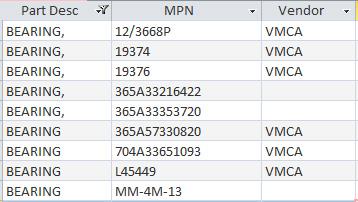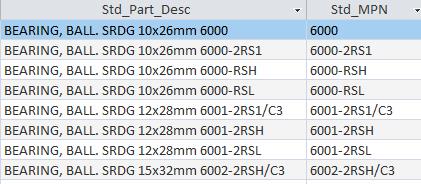From numerous inventory audits and past experience conducting more than 75 training courses worldwide, it is concluded that most companies spend far too much money on maintaining plant equipment from a spare parts perspective. Excess costs arise from buying parts from OEMs when they can be purchased direct from them or the MRO vendor; stocking too many duplicates; stocking too much or too little. Excess downtime is incurred when maintainers are unable to find the right spare in a timely manner. That issue was summed up recently by a plant engineering manager who said: “I am fed up with my maintenance team spending up to half of their day searching for parts.”
A six-phase spares improvement and stock optimisation programme for an existing site is shown above. This article skips phase 2 (develop/improve processes) to focus only on phases 1, 3 & 4 which most directly bear on the data aspects of spare parts inventory.
The first phase of the improvement programme is to conduct an audit. There are three elements to the full audit:
• Assess inventory, warehouse and purchasing management practices that are used to manage spare parts. Do they comply with best practices?
• A review of CMMS (computer maintenance monitoring system) inventory data, cataloguing, inventory data, bills of materials, etc.
• Procedures and guides.
The main purpose of the inventory data audit is to identify issues especially related to increased costs. This will allow the company to develop an action plan to resolve the issues. Our focus is to identify issues that cause poor inventory control and result in excess stocking costs or stock outs, prevent effective purchasing, prevent effective stock rationalisation, and that impact the maintainers’ ability to find the right spare in a timely manner. This can result in reduced maintenance effectiveness, excess downtime and even emergency purchases.
The scope of the data audit depends on the scope of the data provided. If we have average demand rates, we can determine the number of years of stock; this will highlight excess stocking. If we have accurate lead times, we can calculate part service level by line item, to identify overly high as well as overly low stocking levels.
CATALOGUING QUALITY AUDITING
This is the most important area; when done badly, it will increase costs. The main areas that are reviewed are short part descriptions, manufacturers, part numbers (P/Ns), stock type/categories, plus an initial duplicate analysis. A final duplicate analysis can only be carried out once descriptions and part numbers have been standardised.
In the catalogue quality data analysis, we look for best practice, for example, noun, qualifier, and attributes, and use of vendor and manufacturer part numbers.
Figure 2 is a bearing list from an aircraft maintenance company and shows one of the worst datasets of part descriptions.

Figure 3 is a bearing example from an oil and gas operator. If you look closely, you will see six variations to enter a ball bearing. There is inconsistent use of spaces and non-alphanumeric characters, and some descriptions start with the noun (‘bearing’) while others start with the qualifier (‘ball’).

We find that most companies that we audit have between 10-15% duplication of line items. Most inventory control personnel or engineers do not understand how to check for duplicates. When they receive recommended spare parts lists for new equipment, they do a poor job of checking against existing stock. This process is not helped when companies do not have a good process for initial spares in the project phase.
There are many causes of duplication, including mixing both vendor and manufacturer part numbers; lack of standardisation of the format used; no strategy on how to deal with manufacturers who use dual part numbers (such as a product code and catalogue ID); lack of catalogue maintenance.
Often, the same manufacturer part number is found to have been entered for different spares. These show up as duplicates, but when the analysis includes the part description, it is realised that they are not duplicates, and need a physical check at the bin.
Duplicate stock results in excess stocking, additional downtime and sub-optimum stock optimisation (Figure 4).

DATA VALIDATION & CLEANSING
If the cataloguing data is found to be very poor, then validation and cleansing is recommended. In our opinion, the most important is the cleansing of part numbers, as this can reveal additional duplicates and typos. To ensure data governance, we work with both templates for each noun and qualifier set and a master part number database, which currently houses over 82,000-part numbers. A sample of standardised part descriptions and numbers is shown in Figure 5.

Phase 4 of the improvement process includes both the removal of all duplicates identified following cleansing and the seeking of standardisation opportunities.
In one of our first studies, we helped a company reduce the number of spiral wound gaskets stocked by 60%. This was achieved by removing all duplicate line items, reducing the number of manufacturers from six to one and defining the material strategy. This can be an involved process where supply chains are complex; Figure 6 shows an example from a UK automotive manufacturer.
